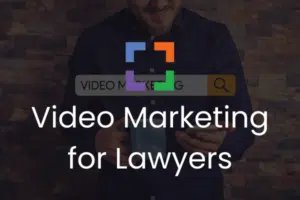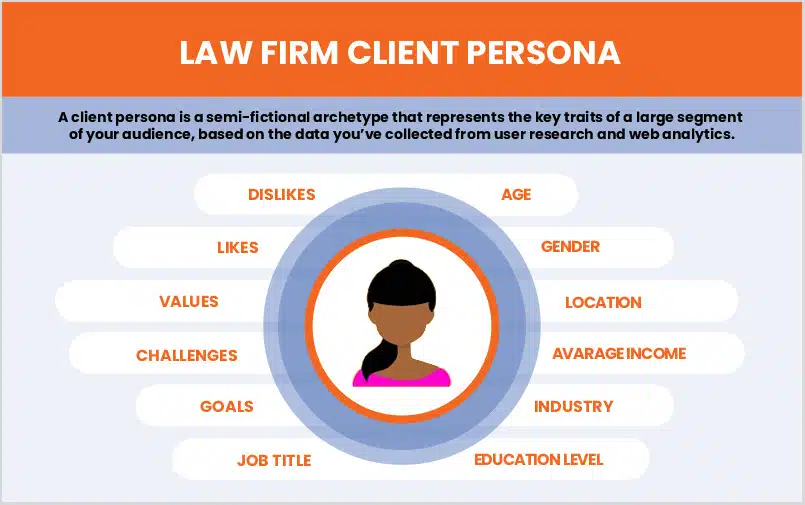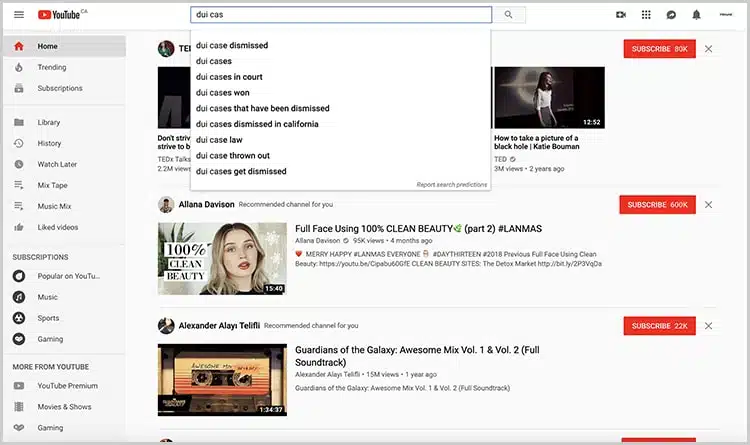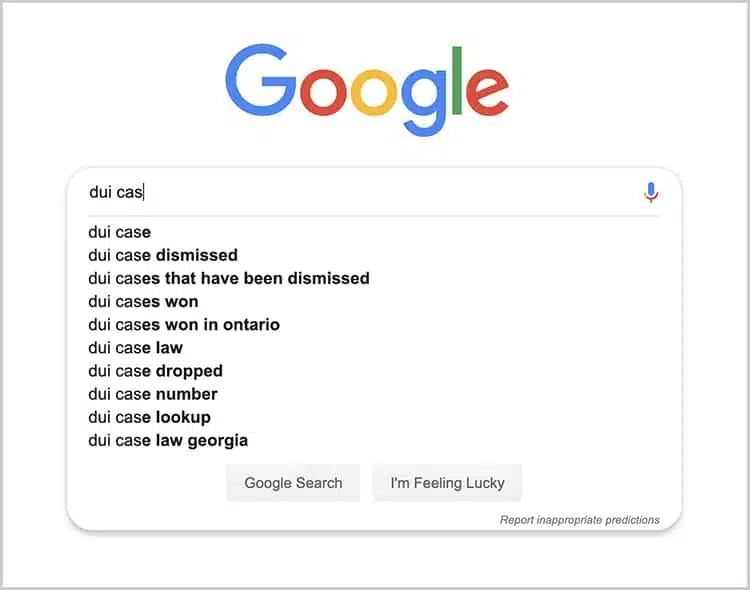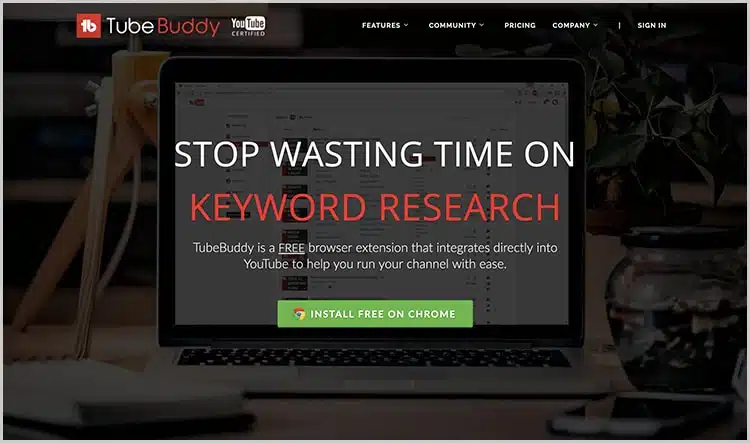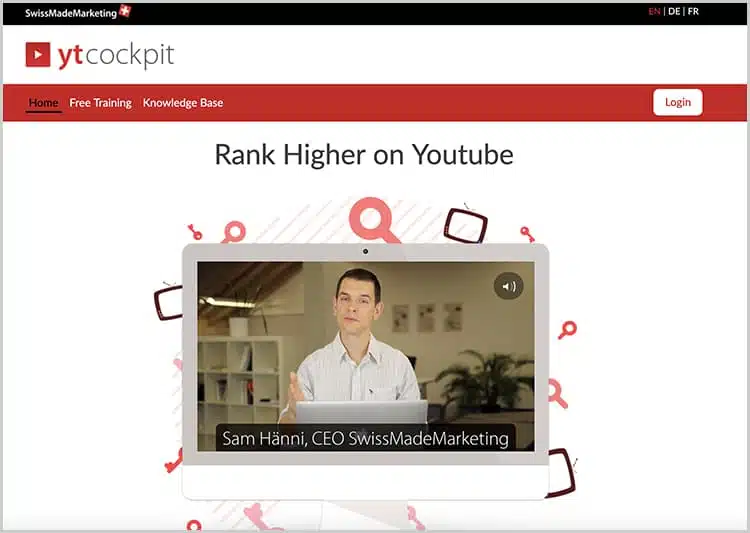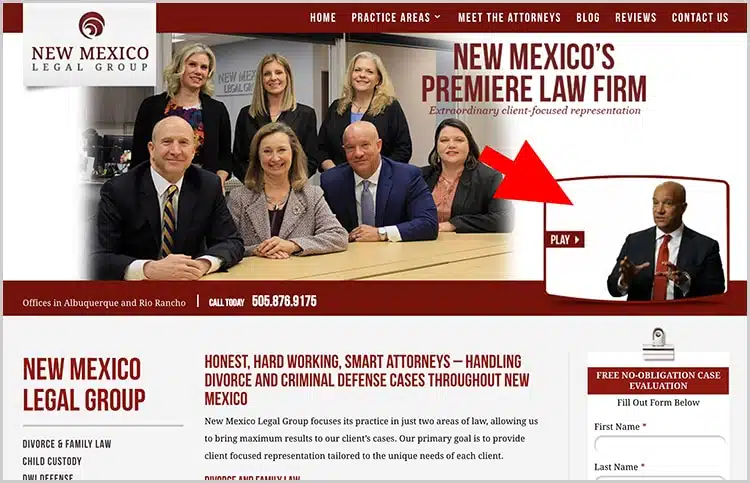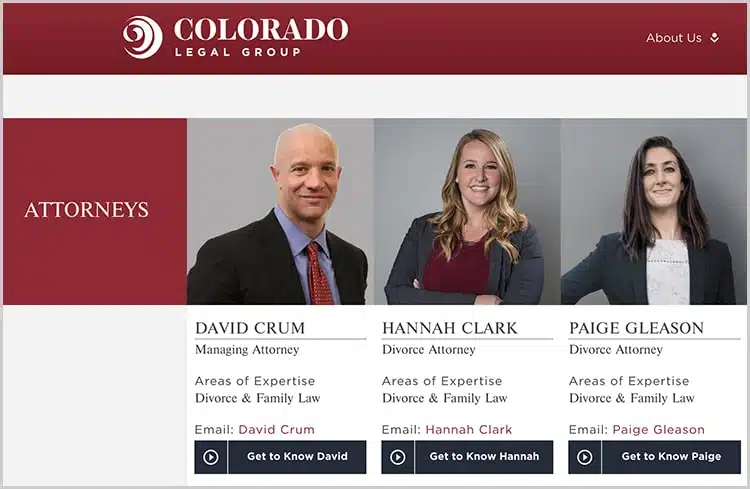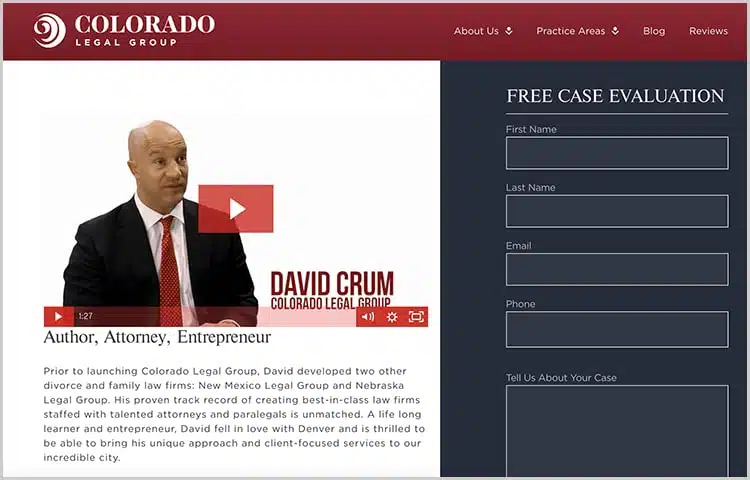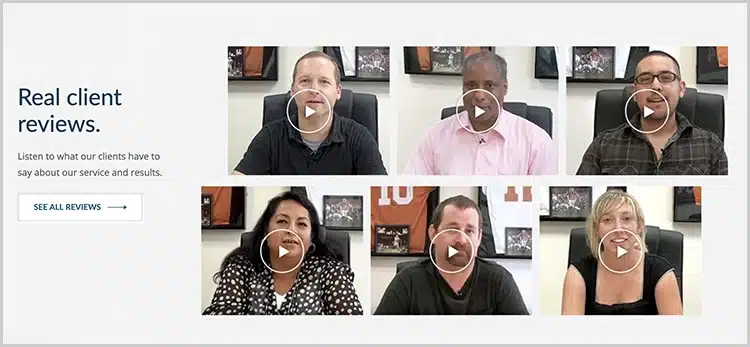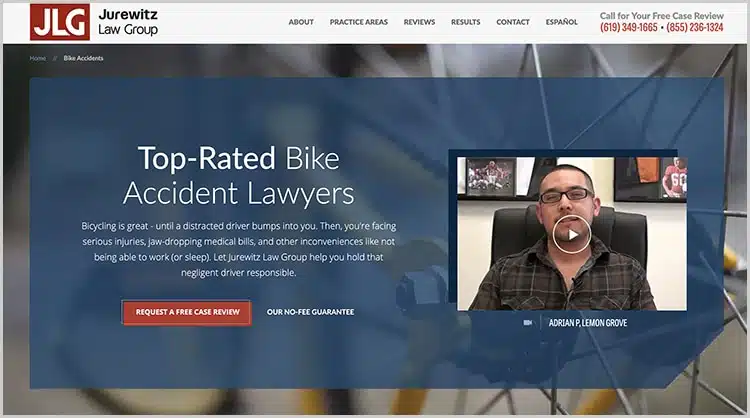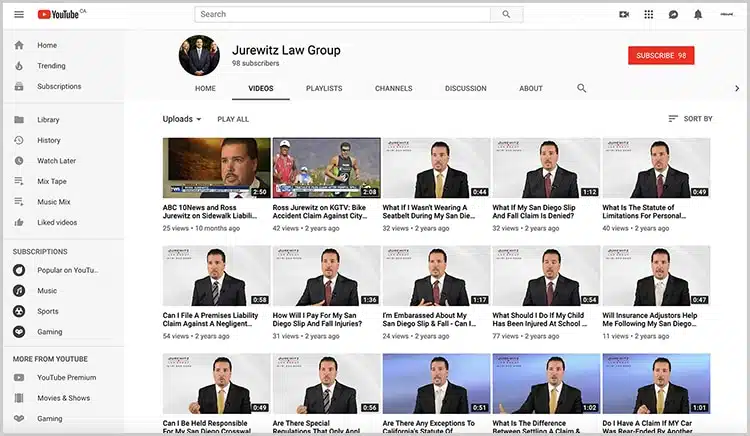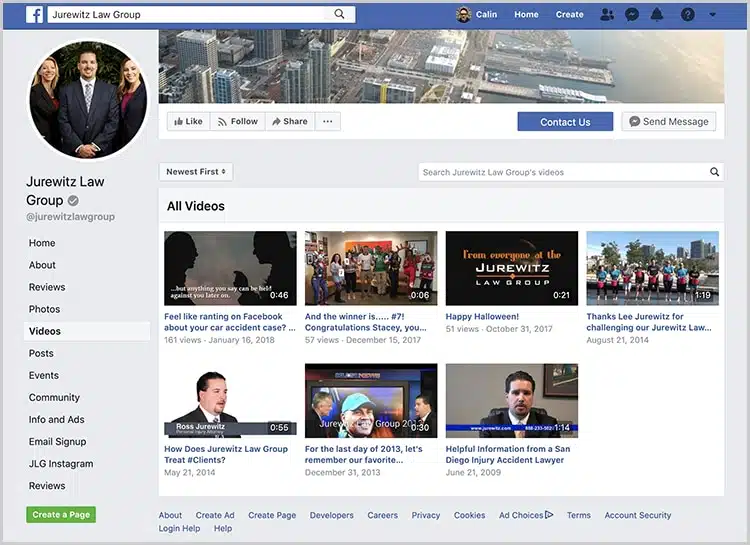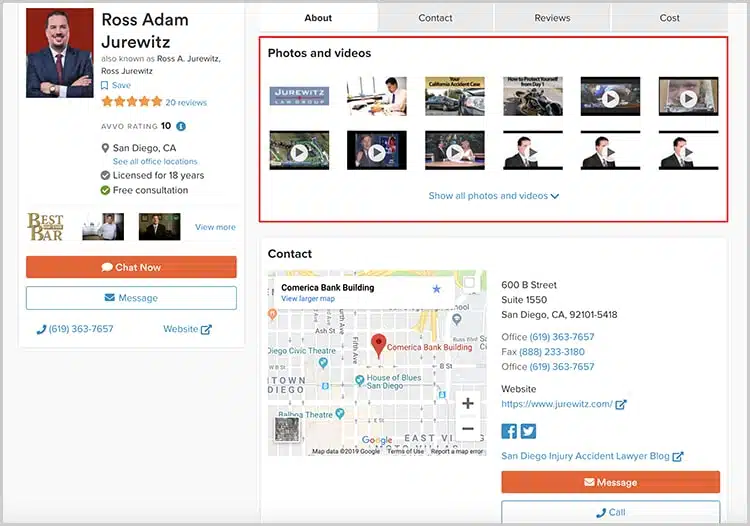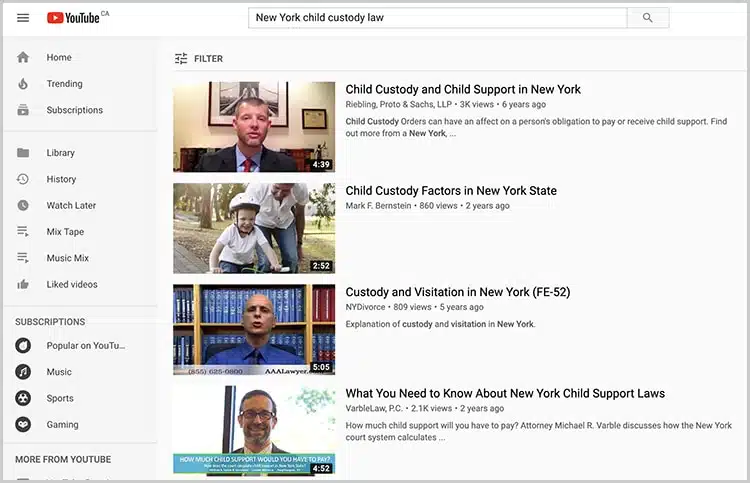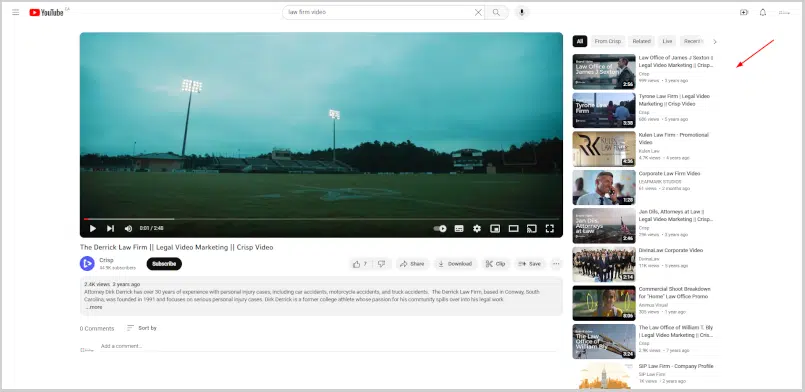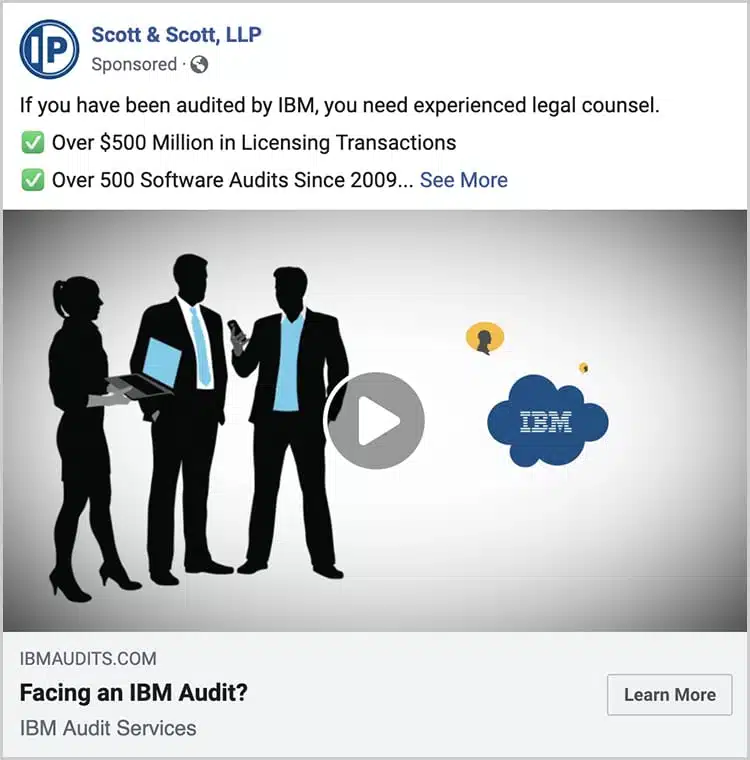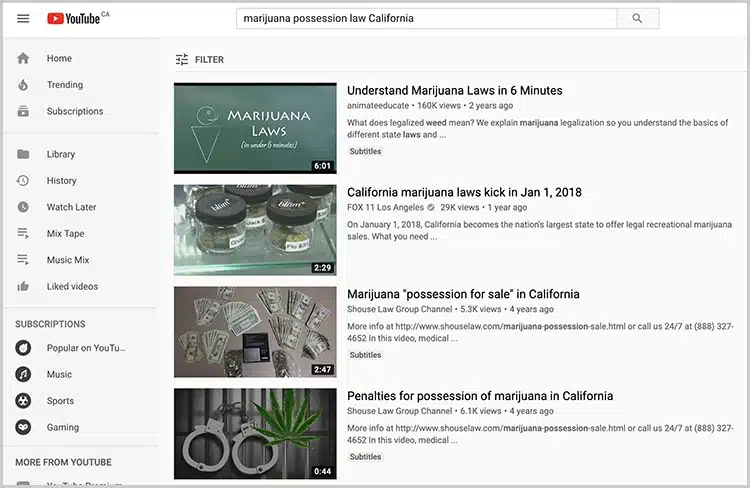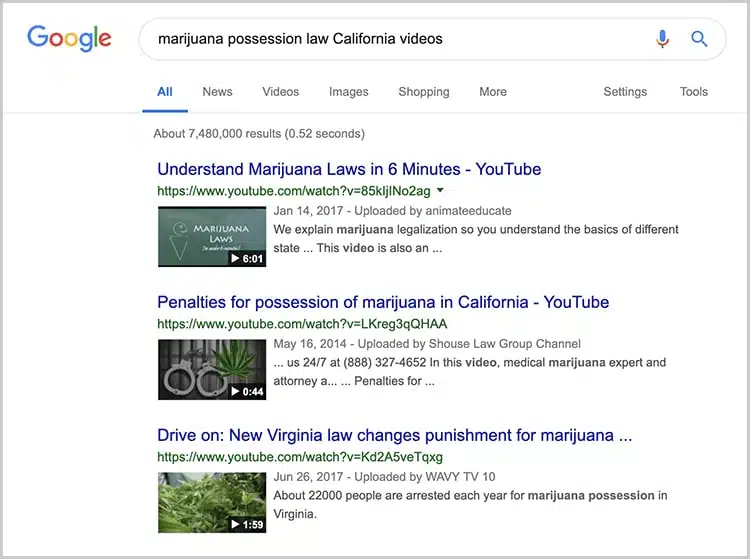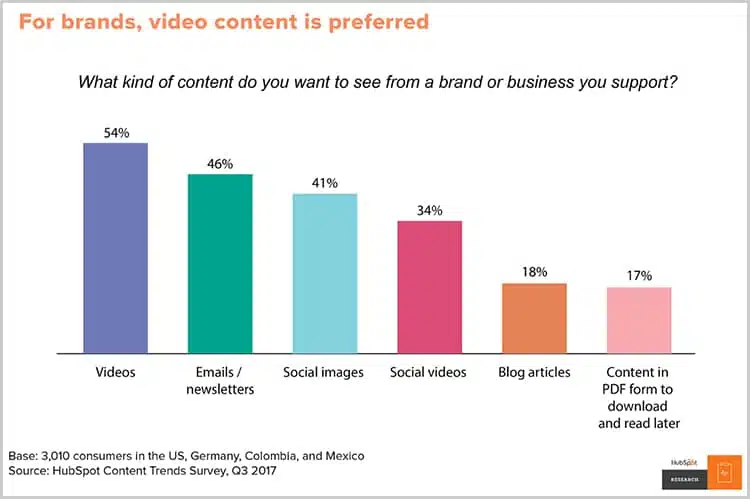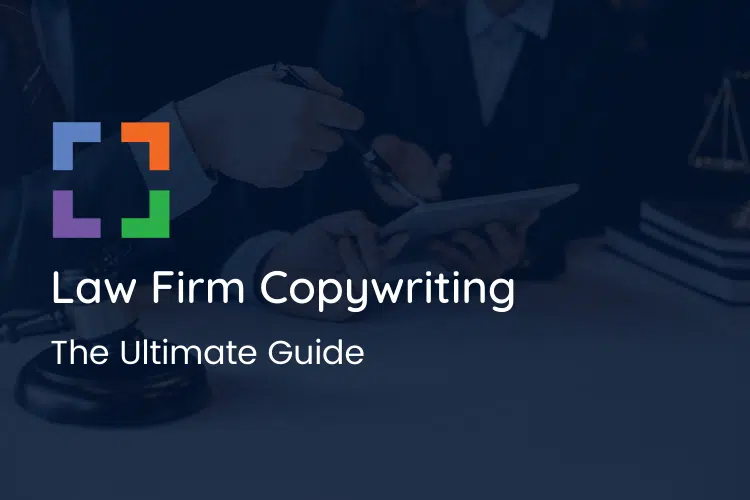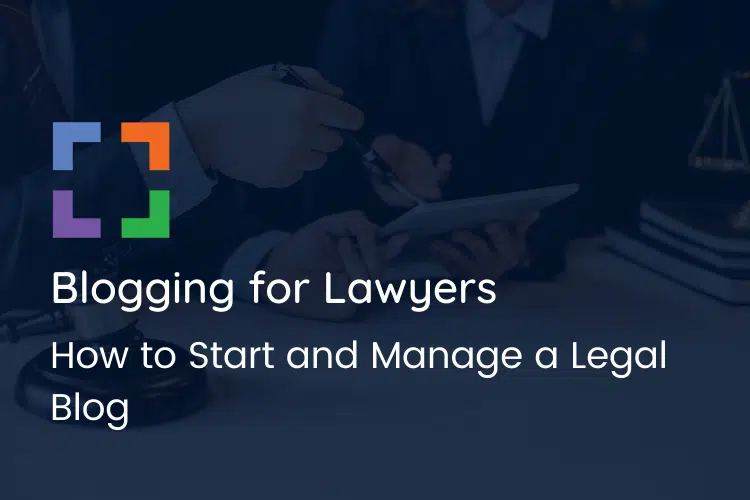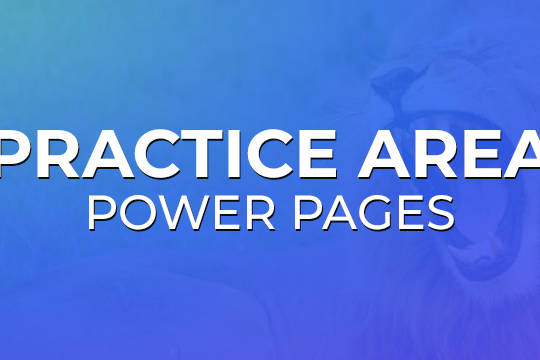Video Marketing for Lawyers: 13 Techniques for Attracting Clients
Video marketing ticks all the boxes if you want to generate more traffic, develop more leads, and convert more paying clients for your law firm.
Videos can:
- Improve SEO and search rankings
- Improve engagement with your target audience
- Persuade potential clients that you’re the right law firm for the job
The problem with making videos is the perception that it’s either too difficult or too expensive.
In this article, we’ll focus on practical, real-world tips that can get you immediate results with your video marketing.
By following these 13 techniques, you can get video working for your law firm.
Want to skip right to the 13 video marketing tips? Click here.
In This Article
- Why Attorney Video Marketing Is Worth the Investment
- 5 Stages of Law Firm Video Marketing
- 13 Video Marketing Techniques for Lawyers
- 1. Perform Keyword Research to Uncover the Video Content Your Audience Is Searching For
- 2. Invest in Writing a Script and High-Quality Video Editing
- 3. Develop Educational Content That Focuses on Specific Questions Asked by Your Clients
- 4. Create a High-Quality Branded Video for Your Homepage
- 5. Develop Customer Testimonial/Case Study Videos to Build Social Proof and Trust
- 6. Conduct Video Interviews with Lawyers
- 7. Create Vlogs and Video Versions of Podcasts
- 8. Use a Call to Action in Your Videos
- 9. Publish Your Videos to Multiple Platforms
- 10. Ensure YouTube Videos are Optimized
- 11. Use Videos In Facebook Ad Campaigns
- 12. Go Long On Videos Wherever It Makes Sense
- 13. Use Animations To Engage Your Audience
- Outsource Your Video Marketing When Necessary
Why Attorney Video Marketing Is Worth the Investment
Video marketing is a massively effective form of marketing. Consider that, in 2022, the average American spent 23.1 hours a month watching YouTube using the app. If you take into account desktop use, that number may nearly double.
Other law firms are thriving as they invest time and resources into building their online presence through video. It’s an effective brand-building tool, and video is often used as a way to establish trust and credibility with prospective clients.
You may see some success with traditional marketing approaches, but consider the leads you’re leaving on the table when you don’t do video marketing.
OptinMonster reports that:
- 96% of video marketers say video marketing has increased user understanding of their product or service
- 89% of people have been convinced to buy a product or service by watching a video
- 90% say video marketing has helped them generate leads
Not every practice area will want to invest in video. But criminal defense lawyers, for example, have a lot of valuable information they can share with potential clients through video.
Check out how Trey Porter answers a frequently asked question on his YouTube channel.
Video makes him instantly approachable and adds a much-needed touch of personality to his law firm. Plus, it boosts online engagement and goes miles toward establishing himself as a thought leader.
Get More Traffic & Leads
Talk to a marketing expert

“My website continues to dominate all the top website searches in my industry and my business has grown 10 fold as a result.”
Micheal Oykhman
Oykhman Criminal Defence
5 Stages of Law Firm Video Marketing
Here are the five primary stages of video marketing. Expect to go through these for each and every video you make.
Research Your Audience
To market your services effectively, you need to know who you’re marketing to. Understanding your target audience’s pain points, needs, and wants can help you craft messaging that resonates with them.
Before writing your first script, create a client persona, which we go over in our law firm marketing strategy guide.
Ask yourself:
- What are their likes and dislikes?
- Where do they live?
- How old are they?
- What is their job, and how much money do they make?
- What values do they hold?
You likely have access to all of this information already. Use your existing client base to shape your client persona (or personas) and create the perfect profile. You can begin creating video concepts and messaging that speak to them rather than putting out a generic video.
Knowing who you’re speaking to and having your messaging match up with their wants and needs is an important part of marketing. Don’t overlook it.
Write Your Script
Next, you’ll use your creativity to develop a video concept and write a script.
Use what you now know about your target audience (and your practice area) to set the tone for your videos. Will your viewers appreciate a warm, inviting, but casual style of video? Maybe humor could go a long way? Or is an authoritative, serious video the way to go? Only you can decide.
Here are a few examples:
- If you’re a criminal defense attorney, you may want to create informational but professional videos to communicate that you know your stuff and are personable.
- A corporate lawyer may choose an authoritative and serious tone for their videos.
- A family law firm may deliver a move inviting, casual, and personable tone while still being educational.
Now that you know the voice you want to use in your videos, it’s time to write your script.
Everyone works a bit differently. You might find yourself doing better with talking points, or you may need a fully written script. Either way, focus on being concise while still delivering all of the information necessary to resonate with your client persona.
And keep in mind a couple of things:
- Viewers likely don’t care about where you went to law school or your personal background. People click away from a video if it doesn’t capture their interest in the first several seconds. So, jump right into it with an engaging fact or question rather than frontloading your video with personal information.
- Get your script (or better yet, a test run of your video) in front of several people and go through revisions. Your first few videos will be rough, so it pays to take the time to make sure they’re as good as can be.
We’ll talk more about writing your script later.
Create Your Video
Now that you’ve written your script, you can move on to the fun part — filming your video.
You have a couple of options here. If budget permits, you can hire outside help in the form of a cameraman and/or video editor. But that’s not absolutely necessary today, as modern smartphones can film professional-looking videos.
You can easily make a video like this with any modern iPhone.
While quality is important, you should prioritize the content of your video above all. That’s what reels in your audience and keeps them watching.
With that in mind, if all you can manage is an iPhone video, that’s perfectly fine. What matters is the messaging in your video.
When filming your video, consider:
- What are their likes and dislikes?
- Where do they live?
- How old are they?
- What is their job, and how much money do they make?
- What values do they hold?
Promote Your Video
Now your video is filmed and edited. It’s time to distribute and promote it.
The nature of social media and video-sharing platforms makes it easy (and free) to share your videos with the world.
Here are the top places to share videos:
- What are their likes and dislikes?
- Where do they live?
- How old are they?
- What is their job, and how much money do they make?
- What values do they hold?
Measure Your Results
Like any marketing initiative, you’ll want to measure and analyze your results. Then you can take those results and use them to inform any changes you may need to make.
The first metric you’ll want to measure is the number of views. If you aren’t getting any views, then there could be a couple of problems.
- Your video isn’t discoverable (that is, you haven’t distributed and promoted it well)
- It’s not interesting or useful to your audience
But if you’re getting views and no leads, that’s another problem entirely. After all, you want to drive traffic to your website and convert them into paying clients.
If you aren’t already using a CRM for law firms to track and monitor your leads, check out our CRM guide.
13 Video Marketing Techniques for Lawyers
Let’s jump right in.
1. Perform Keyword Research to Uncover the Video Content Your Audience Is Searching For
Making videos costs time, effort, and money. Before starting, it makes good sense to understand what your audience is searching for.
You’re probably familiar with keyword research for written copy and content on your website. But did you know that a few simple keyword research techniques can help you find out what people are searching for on YouTube?
Simply head over to YouTube search and start typing in a search term connected to your practice area. As you type, YouTube will suggest other terms — these are the top related video searches.
In this example, I started typing DUI cases.
It’s that easy.
And you can get more ideas from standard Google search suggestions in the dropdown.
There are also a few great tools you can use to generate video content ideas.
TubeBuddy Tags is a free Google Chrome extension that allows you to check the tags your competitors use for their videos. Once installed, head over to a competitor’s video and check the tags. If the video is poorly optimized, you can make a video based on a similar subject to outrank it.
Then there’s YT Cockpit. Once you enter a keyword, this powerful tool will throw up many other keyword suggestions, along with key metrics (like average views on YouTube).
Once you identify the keywords you want to target, you have two basic options with your videos:
- Optimize an existing video around it
- Create a new video for it
If you don’t optimize your video around the keywords you identify, they’ll just get buried. But more on that later.
2. Invest in Writing a Script and High-Quality Video Editing
What you say in your videos is critical, as you’re trying to connect on an emotional and intellectual level with the target audience.
Unless you’re doing an off-the-cuff vlog, you need a good script (or, at a minimum, talking points).
Invest in a good scriptwriter or write a script with key points to touch on. Ensure that whoever edits your videos pays attention to clear audio as well as the video content.
This is a good example of a video with a clean intro, good audio quality, and the use of talking points from Trey Porter Law in San Antonio about the consequences of DWI in Texas. I can say for certain that he uses notes (after all he is our client!) but the content flows naturally as though he’s doing it off the cuff.
A good script should, ideally:
- Include a bullet list of general points that you’ll cover when addressing the camera (you don’t want it to sound like you’re reading, so it may take some practice).
- Introduce the subject of the video very early for educational and how-to videos. Otherwise, viewers won’t hang around.
- Be as conversational as possible — you’re trying to connect with your target audience, not bamboozle them with your knowledge.
- Keep sentences short and to the point.
- Avoid jargon and legal-ese!
A couple more quick scriptwriting tips:
- Keep timing in mind — 350 words usually equates to two minutes of audio
- If you’re presenting the video, practice reading the script in front of friends or colleagues to simulate the pressure of talking to a camera
Related – SEO for Lawyers: A Beginner’s Guide A guide to SEO for law firms.
3. Develop Educational Content That Focuses on Specific Questions Asked by Your Clients
During your keyword research, you’ll start to uncover the specific types of videos that people are searching for on YouTube and Google.
In the early stages of search, before they’re ready to hire a lawyer, potential clients are often looking to be informed about a particular legal matter. They’re not usually searching for corporate-style company videos in this phase.
People use video to learn. They are four times more likely to watch educational videos than they are to read the text.
Tailor your videos for the types of informational/educational searches that people are looking for in the early stages of search, and answer the questions that your target audience is asking.
Take child custody law. If you’re facing the high emotions of a potential child custody battle, you’ll want to know what you need to consider so that you can get your thoughts (and a strong case) together.
Here’s how New Mexico Legal Group helps educate their audience on the subject.
A couple considering divorce may want to know more about collaborative divorce as the way forward.
The Colorado Legal Group answers that question (and many others along these lines) in detail on their site.
Note the call to action next to the video. That’s important. More about incorporating calls of action into your videos in Tip 8.
The beauty of educational videos is that you don’t have to be very creative, and they don’t have to take up much time. You know your stuff, and you need to communicate it clearly on camera.
Answering people’s questions via video demonstrates authority, builds engagement and trust, and makes it more likely they’ll call you.
It also increases the time that visitors spend on your website, potentially generating more organic traffic through higher search rankings.
4. Create a High-Quality Branded Video For Your Homepage
Most of the best law firm websites now include high-quality branded videos.
Why?
Because video can spearhead your branding and showcase your firm to people considering hiring a lawyer to generate leads.
This type of video is intended for your target audience in the second stage of search: they already have an awareness of the legal issue they’re facing and are looking for the best possible solution.
They are looking to hire. That means they want different questions answered.
What makes you different? Why do you practice law in this field? Why should anyone considering hiring a lawyer in your practice area choose you?
Typically, a law firm branding video will include:
- Your key value proposition — what sets you apart, and why should they call you?
- Markers that demonstrate credibility and authority.
- Behind-the-scenes shots of life at your law firm to build trust and engagement.
- A little of the story of who you are and how you came about — if interesting and relevant to your audience.
- Shots of your offices and surrounding location — if relevant.
- Key personnel — with a few words from each, if possible.
Best practice is to place your video above the fold on your homepage. If it’s going to spearhead your branding, you want it front and centre for maximum impact.
See where New Mexico Legal Group places their video on the homepage, for instance.
As well as the homepage, you can upload your video to multiple other places on the web and achieve maximum reach and ROI.
5. Develop Customer Testimonial/Case Study Videos to Build Social Proof and Trust
Another type of video that potential customers want to view is testimonials and case studies.
They search for these videos when they’re at the decision stage and actually looking to hire a law firm.
Prospective customers want to know that the claims made on your website are supported by real client experiences that mirror their own situations.
The social proof derived from others talking positively (and even emotionally) about the results you achieved may be the “clincher” between choosing your firm and opting for one of your competitors.
Looking to hire a personal injury lawyer in Toronto? This testimonial video could provide a compelling reason to choose Thomson Rogers.
Video testimonials are much harder to fake than text. They are trusted more and are far more compelling.
Video stories have the ability to make emotional connections between people who don’t know each other. Text struggles to do that.
And, as you can see from the example above, they work best when it’s real customers sharing real experiences of working with your firm.
6. Conduct Video Interviews with Lawyers
Another useful type of video to include on your website or YouTube channel are interview videos.
A potential customer looking to hire a lawyer to fight a criminal case will usually want to know a bit about that person before they pick up the phone.
They want to hear them talk about their practice area, the cases they’ve won, the types of people they’ve worked with, and how they approach cases.
They want to know that they’re experienced in criminal law.
You can demonstrate experience in your practice area through video interviews with key lawyers in your firm. Personally address common customer concerns, strategies for handling cases, actual case studies, and so on.
This helps to build trust with your audience as they approach the decision stage of their search for a law firm.
Take the example of Colorado Legal Group. You have the option to “Get to Know” each of their lawyers from their Meet the Team page.
Click through, and you can watch a video with each of the lawyers being interviewed.
The effect of this?
Anyone looking for a divorce lawyer feels like they already know (and trust) David and his firm. They’re more likely to pick up the phone and call.
7. Create Vlogs and Video Versions of Podcasts
Vlogs are simply video blogs.
The great thing about them is that these videos don’t need to be highly polished. You can shoot them from your iPhone, and it’s OK if they’re a little rough around the edges.
You can keep them quite raw and real. They’re designed to share thoughts and insight, show the vlogger in action or in a quieter reflection period, and be highly focused on a particular topic.
For instance, you can highlight:
- Recent courtroom experiences
- Particular cases
- Interesting client experiences (while retaining client confidentiality, of course)
- Thoughts on legislative changes
- Opinions on your practice area
- Tips for your target audience
- A tour of your office
Vlogs won’t be for everyone, but they’re worth considering. Clawbies (The Canadian Law Blog Awards) includes a “Best Podcast or Vlog award.”
This was one of the 2018 winners, Kyla Lee from Acumen Law Corporation:
Vlogs can help adventurous lawyers set themselves apart from the competition with an “inside look” at how you can help.
They can help break down those perceived barriers that legal firms often face from new clients.
And, if you’re really good at delivering them, they can build you a strong and loyal following.
8. Use a Call to Action in Your Videos
This deserves a point of its own, even though it’s been mentioned already.
Why? Because so few law firms include a call to action at the end of their videos!
Get into the habit of doing that every time — for FAQ videos, testimonials, corporate-style branding videos, vlogs, etc. Just like law firm landing pages, they always need a call to action.
Some lawyers cringe at this aspect of video marketing, but your call to action doesn’t need to be “salesy” at all.
Your calls to action should be based on the stage your viewers are at on this journey, and they should help them take the next logical step.
Don’t assume that the viewer knows what to do next.
Simply inserting a slide that says “The Law Offices of ABC Law Firm” at the end of your video (like the majority of law firms do) doesn’t cut it.
Look at this excellent video, that misses the mark on its Call to Action.
Compare the above example with this:
Examples of calls to action you can use for the first stage (awareness):
- Click the link below for more info
- Visit our website to find out more about (insert topic)
Examples you can use for the decision stage:
- Need help right now? Give us a call
- Book a free consultation
9. Publish Your Videos to Multiple Platforms
You’ve researched and made your videos. They’re looking great. What next?
You need to get your videos out there working for you. That means publishing them to all the places on the web where you can reach your target audience.
Here are the key places:
On Your Website (Homepage, Review Pages, FAQs)
Educate your audience by answering their questions and increasing conversions with social proof.
On Landing Pages
Increase conversions by up to 80 percent by including video on your law firm landing pages.
On YouTube
Drive traffic to your law firm’s website from the world’s largest video platform.
On Facebook
Use video in Facebook ads (more about that in Tip 11) and on your feed.
Avvo
Add a link to your video on your Avvo profile.
10. Ensure YouTube Videos are Optimized
YouTube is where you can really start building a following for your videos.
It really is huge:
- 5 billion videos are watched on YouTube every day
- 1 billion people are YouTube users
- It’s the second-largest search engine on the planet after Google
However, most lawyers upload their content, which gets buried beneath a pile of other videos on the same subject.
To stand out, you need to optimize your YouTube videos. Just like with web pages but with a few differences.
If you’ve made a high-quality video on “New York child custody law” and someone searches for that term, your video must appear high on the first results page — like with Google.
If your video doesn’t appear in the first few listings, it will probably get little views, no matter its quality. Work on optimizing it to get it ranking high.
The main YouTube ranking factors are:
- Session time — how long users spend on the YouTube platform after watching your video.
- Watch time — how long are people watching your video for?
- Audience retention — the percentage of your video that people watch.
- Engagement — how do people interact with your video (likes, comments, shares, etc.?)
- Click Through Rate (CTR) — do viewers click the links you include?
It’s useful to keep these in mind when you create your videos. One or two of them are dealt with in more depth in Tip 12.
Also, keep in mind the suggested videos on YouTube. These show up in the right-hand panel when you watch a video.
The better you optimize your videos, the more likely they are to be included as suggested videos. And that will increase views.
Here are the main areas to focus on when it comes to optimizing your YouTube videos:
- Video title: Your title should include your main target keyword once. It also needs to be compelling enough to encourage users to click through to watch the video.
- Example: Child Custody factors in New York State
- Video description: Your video description should ideally be 200 words or more. Include your main keyword and make it long enough to provide YouTube with a solid understanding of what the video covers and to inform potential viewers why they should watch it (to boost CTR).
- Video Tags: YouTube recommends that you tag your videos — this is another optimization step you should go through. You don’t have to over-think what to tag your videos with. Just settle on 5-10 tags, include your keyword in at least one of the tags, and make sure the tags reflect the content of your video.
- Mention your keyword in each video: YouTube is smart. It knows what you’re saying in your video and will judge its relevance to the title, description, and tags. If you title a video “Child Support in New York,” write a description relating to this, and tag it accordingly — but start talking about car accidents — the video will be penalized in rankings.
There’s a little more to it. But just by mastering these four areas of YouTube video optimization, you should see a ranking boost for your videos.
Most law firms are simply not doing these things. You have an opportunity to outrank them on the largest video platform on the planet.
11. Use Videos In Facebook Ad Campaigns
YouTube isn’t the only mega-platform where video dominates.
Over 100 million hours of video are watched on Facebook daily, and video posts are shared 12 times more than text and image posts combined.
You don’t really need to be bombarded with stats to understand that:
- Engagement is far higher on Facebook posts that include videos
- Facebook’s algorithm is geared toward video
- Ads are also more effective with video included
Law firms using digital ads face the problem of audience saturation: how do you get people to actually view your ad when there are so many out there?
The answer is video.
If you upload your videos to Facebook (rather than simply linking to your YouTube videos), they will auto-play in the news feeds of your target audience. This can breathe life into ad campaigns, increasing views and audience engagement.
Online video ads attract 20 percent more clicks than static images.
Whether you decide to use Facebook ads will depend largely on your practice area and your overall marketing and branding strategy.
But, if you do decide to use Facebook ads, you can incorporate video for all stages of the sales funnel:
- Building awareness of your law firm.
- Consideration phase — which law firm to hire?
- Conversion — ready to make a decision to hire?
Video is the way forward if you’re serious about Facebook ads.
12. Go Long on Videos Wherever It Makes Sense
Don’t be fooled if you read this in other video marketing articles:
60 percent of people stop watching videos after two minutes
That doesn’t mean that your videos need to be under two minutes. You’re trying to appeal to a different target audience.
People won’t generally watch your videos for quick fixes. They’re not looking to quickly check out the main features of a product. The decision of which lawyer to hire might be one of the most important decisions they make in their life.
As a law firm, you’re looking to connect with prospects to help them make this decision and to educate and inform them.
It may not be possible to explain the ins and outs of child custody law in Vancouver, or what you need to do after a car accident in LA within two minutes. So, my advice is to try not to do so.
Go long wherever possible with your videos, just like with the articles, blog posts, and other content you produce.
This has several key benefits:
- You can provide a more in-depth understanding of the topic.
- They can help you improve the total watch time of your videos — one of the most important YouTube ranking factors.
- Informative video keeps people on your website longer — a confirmed Google ranking factor.
All other things being equal, longer videos tend to rank better on YouTube. Check out the length of the top-ranking video for marijuana possession law in California.
And they rank better on Google:
Example
Say you create two videos on marijuana possession law in California:
- The first is a 6-minute video
- The second is a 90-second video
And say people watch 50 percent of your videos.
That means the first video will have four times the watch time of the second — and YouTube/Google will generally rank it higher in search results, all else being equal.
13. Use Animation as an Alternative Way to Engage Your Audience
Not comfortable in front of a camera?
A common challenge that law firms face is actually getting their lawyers primed for being on-camera.
The “load” can be lessened somewhat by using animation in certain types of videos. In how-to videos, for instance, animation with a voiceover can be an engaging and alternative way to explain how something works in plain English.
Legal processes can be complex. Animation can help a viewer visualize how a legal case, court processes, or other series of events work, without a lawyer having to stand in front of a camera to explain.
Animated videos also often include text reminders and music — very effective ways to make your video more memorable (and more likely to convert) with your audience.
Two primary types of animated videos to consider are:
Whiteboard videos like this one from Buckfire & Buckfire, a personal injury law firm in Michigan:
This video has over 12,000 views on YouTube.
Standard animation like this one from The Collier Firm, a personal injury law firm in Mississippi:
As you can see, animation videos can bring a lighter tone to what can be a “heavy” topic. This is not appropriate in all cases, but when people are stressed and looking for answers to problems, it can help set your videos apart.
Animation won’t cover all your video needs but it can help.
Outsource Your Video Marketing When Necessary
When it comes to video marketing for lawyers, there are times when it’s beneficial to outsource to professionals who specialize in creating compelling video content. Here are two companies that stand out in the realm of video marketing:
Crisp
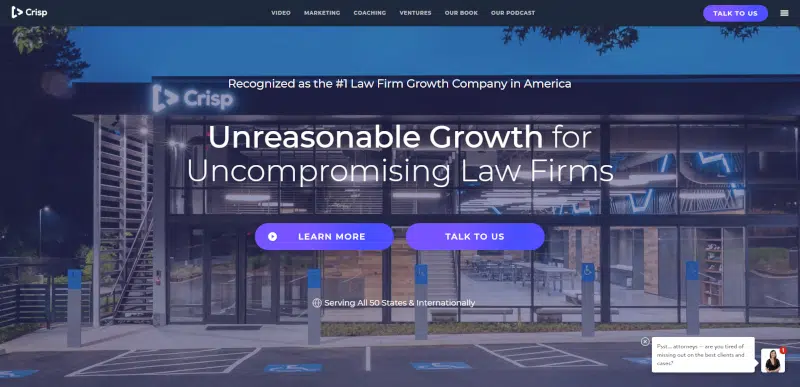
Crisp is more than just a video company; they specialize in bringing attorneys high-value cases in competitive markets. Their approach combines world-class video production with no-nonsense legal marketing, making them a top choice for law firms looking to differentiate themselves in a saturated market.
Key Highlights:
- Crisp Coach: This program offers exclusive experiences for ambitious law firm owners, providing top-tier coaching and workshops that go beyond generic strategies.
- Crisp Social Stack: Amplify your brand across major social channels like YouTube, Instagram, Facebook, and LinkedIn with context-built videos and comprehensive campaigns.
- Crisp Video: Their flagship service focuses on helping law firms become the obvious choice in their market. They assist firms in crafting their unique stories in a manner that resonates with audiences and stands out from competitors.
With a track record of driving over $1 billion in revenue for clients, Crisp has proven its effectiveness in the legal video marketing space.
Creamy Animation
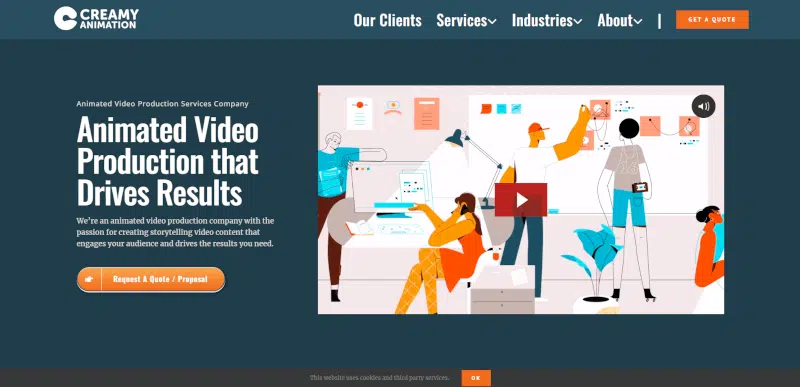
Creamy Animation is an animated video production company passionate about crafting stories that engage audiences and drive desired results.
Key Highlights:
- Comprehensive Video Production: Creamy Animation covers all stages of animation production, from concept development and scriptwriting to final animation.
- Diverse Animation Services: They offer a range of services, including explainer videos, training videos, demo videos, marketing videos, B2B videos, and corporate videos.
- Global Reach: Creamy Animation has partnered with businesses, governments, and non-profits across the globe, producing content for various industries such as technology, healthcare, finance, and real estate.
- Result-Oriented Approach: With a focus on delivering clear and compelling content, Creamy Animation ensures that their videos are optimized to achieve the results their clients need.
Whether you’re looking to convey your value proposition, educate your audience, or boost your online presence, Creamy Animation has the expertise to bring your vision to life.
Outsourcing your video marketing can free up your time and resources, allowing you to focus on your core legal services while professionals handle your video content. Both Crisp and Creamy Animation offer unique strengths, making them top choices for law firms looking to elevate their video marketing strategies.
Get Started with Video Marketing for Lawyers
Over 70 percent of potential clients are watching more video online this year than they were a year ago. The same percentage of people would rather watch a video than read text, given the choice.
As this graphic from a 2017 Hubspot survey shows, video content is increasingly the preferred option.
So, if they’re not watching your video, they’ll be watching a competing law firm’s video.
You probably don’t have an in-house team to produce your video and you’re probably not the next Spielberg, Scorcese, or Tarantino.
So you have two main options:
- Use online video maker platforms to make videos for you
- Hire a digital marketing agency to consult with you and produce your video
Getting high-quality video made has become far more affordable than it used to be. This has lowered the barriers to getting started.
Want to do more than just "get by"?
Attract (and convert) qualified sales leads with Legal Marketing 360, our all-in-one law firm marketing package that includes an expertly crafted Google Ad campaign, SEO program, and website design.
Dennis Dimka
As the founder and CEO of Uptime Legal Systems, I've had the privilege of guiding our company to become a leading provider of technology services for law firms.
Our growth, both organic and through strategic acquisitions, has enabled us to offer a diverse range of services, tailored to the evolving needs of the legal industry.
Being recognized as an Ernst & Young Entrepreneur of the Year Finalist and seeing Uptime Legal ranked among the Inc. 5000 list of fastest-growing private companies in America for eight consecutive years are testaments to our team's dedication.
At Uptime Legal, we strive to continuously innovate and adapt in the rapidly evolving legal tech landscape, ensuring that law firms have access to the most advanced and reliable technology solutions.
Related Posts
May 15, 2023
Email Marketing for Law Firms: How to Attract & Retain More Clients with Email
Learn everything you need to know to…
April 26, 2023
Content Marketing for Law Firms: The Ultimate Guide
Learn everything you need to know about…
March 30, 2023
9 Types of Content You Should Have on Your Law Firm’s Website
Content is important for law firm…
June 16, 2022
Law Firm Newsletter: How to Nurture Leads and Get More Clients
Find out how your law firm could…
May 13, 2022
Blogging for Lawyers: How to Start and Manage a Legal Blog
Learn all about blogging for lawyers,…
July 23, 2019
Practice Area Power Pages: 21 Tips to Get Your Service Pages to #1 in Google
All law firm's need practice area…
